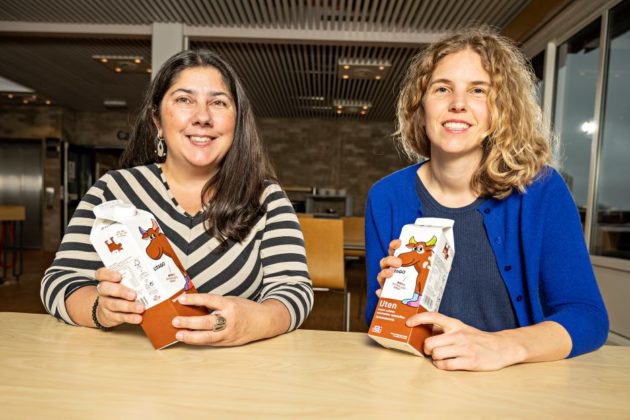Temptation catches your eye

Eye tracking tests show that packaging affects how a product is perceived; expected and actual experience may vary.
What is it that arouses interest and what expectations arise when children aged 9-10 assess chocolate milk cartons? Biometric methods such as eye tracking and facial decoding have been used to find the answers.
“Biometic methods help us to understand children’s perceptions, without having to ask them. Combining different methods can provide a more holistic understanding of how children perceive food and beverages. Food manufacturers can benefit from this when developing healthy foods that children actively choose and like”, says Nofima senior scientist Paula Varela. She and doctoral research fellow Martina Galler are responsible for the studies.
The children associate the Litago cow with good taste
In the eye tracking study, the children were shown eight different varieties of chocolate milk cartons. Four of them had an illustration of the Litago cow. The other four had cocoa beans.
“The children think they will like the chocolate milk with the Litago cow the best, while they think the carton with cocoa beans on is healthier”, says Martina Galler.
The ‘Mysterious Taste’ star always attracts interest
Eye tracking shows that children mainly emphasise different elements based on what they are asked about, but the ‘Mysterious Taste’ star attracts a lot of interest both when deciding how much they like the drink and how healthy they think it is.
Differences between expectations and actual experiences
The scientists used both traditional questionnaires and biometric facial decoding to map how the children experience different tastes. There is a correlation between the answers the children give and the emotions the facial decoding measures.
In addition, there are several differences between the expected and the actual taste experience. For example, the children expected to like the chocolate milk with added sugar the best when looking at the cartons, but they liked both just as much when tasting them blind. Furthermore, they expected to like the chocolate milk with the mysterious better, but they preferred the taste of the original products rather than chocolate milk with added liquorice or mint.
Topics
Children and food